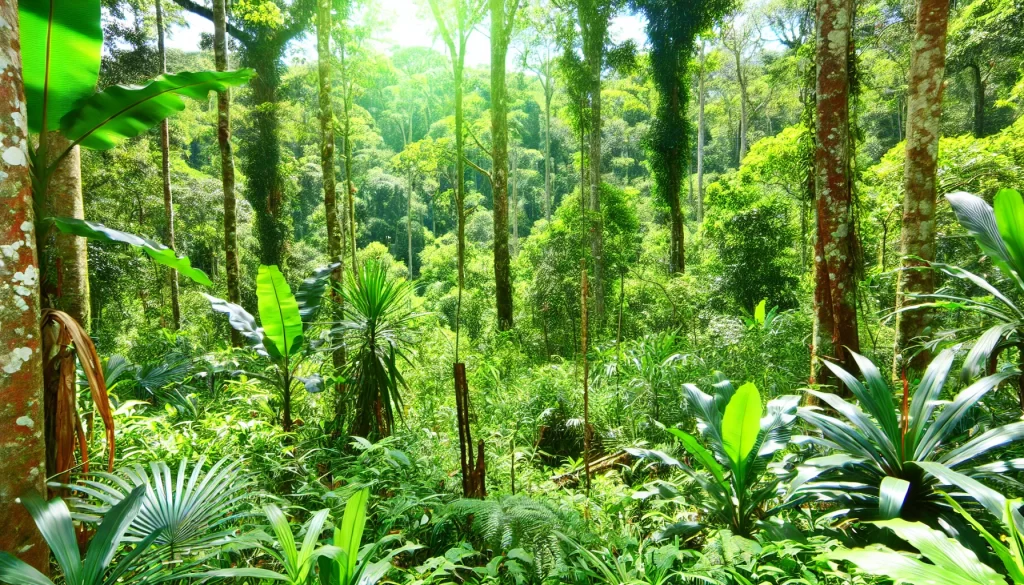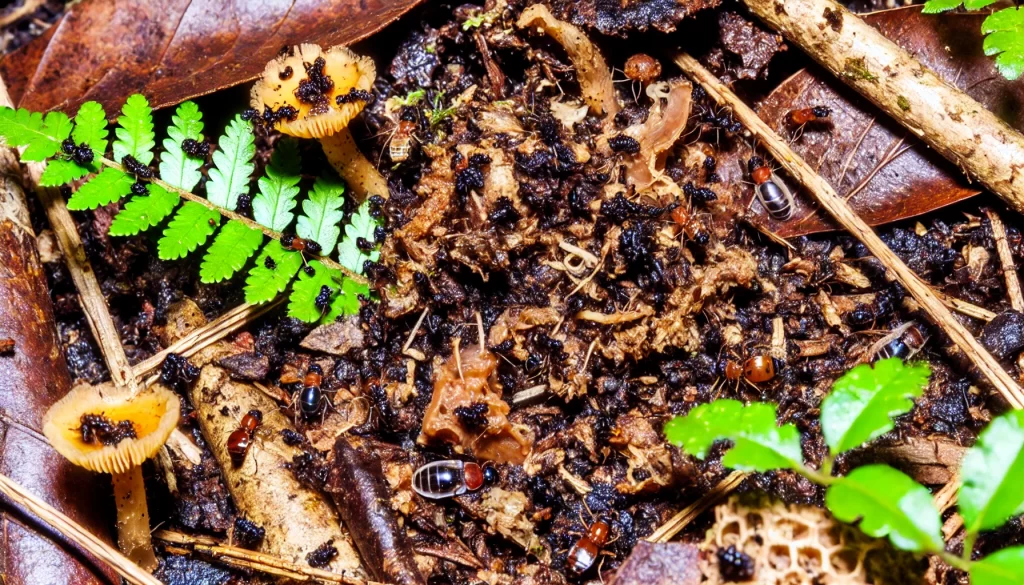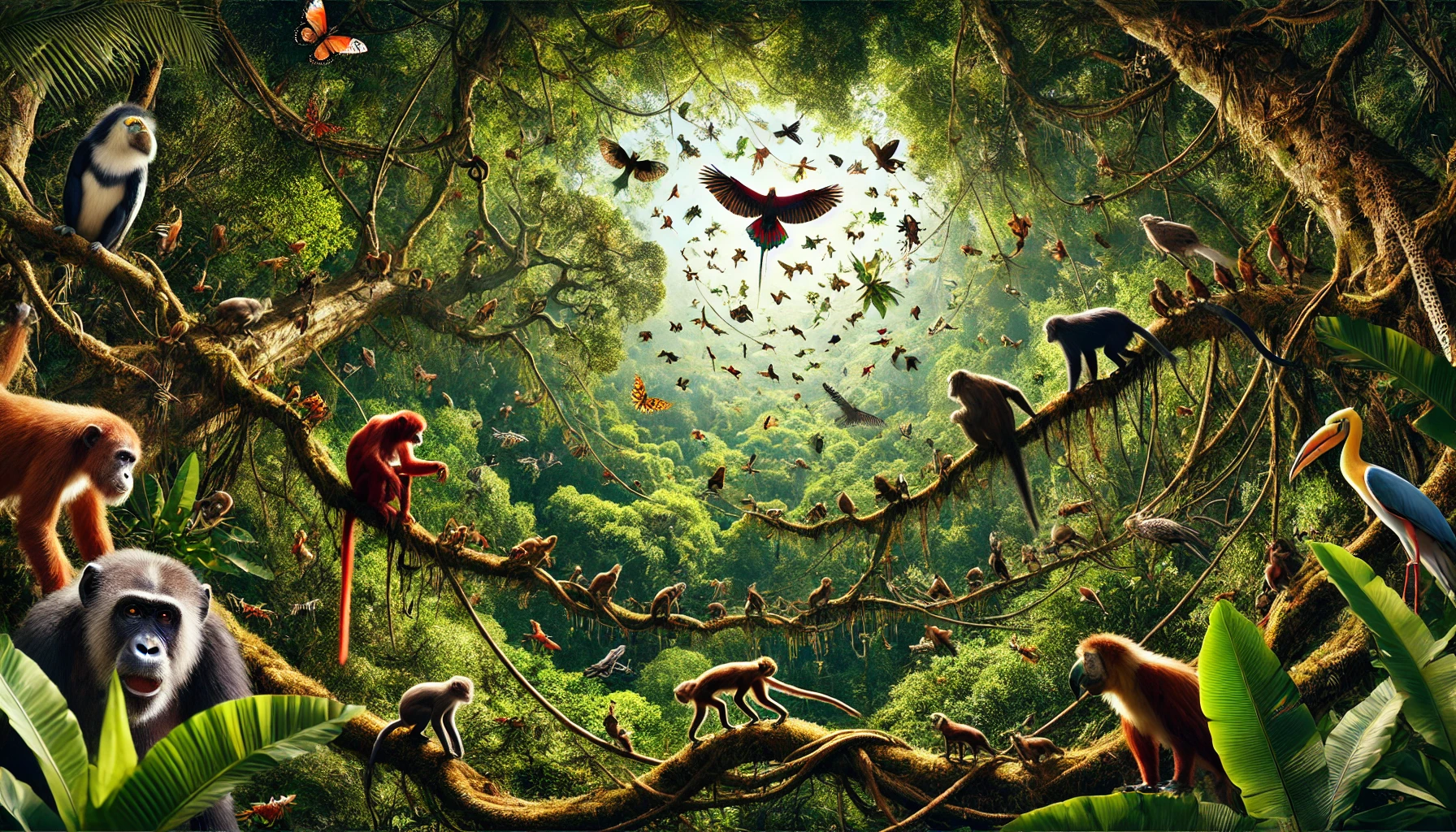Table of Contents
The food web of tropical forest is a fascinating and intricate system that thrives deep within some of the world’s most diverse and vibrant ecosystems. Every creature is vital in this rich tapestry of life, from the tiniest insects to the largest predators. Understanding how this web works sparks curiosity and provides insight into the delicate balance of nature. This article will take you on a journey to explore the thrilling secrets of the food web of tropical forest, uncovering how each link is connected and why it matters to the survival of all species involved.
The Basics of a Tropical Forest Food Web

The food web of tropical forests is a network of interconnected food chains that support the diverse life forms found in these lush environments. Unlike simple food chains, where each organism feeds on one level and is prey for the next, a food web is complex, with multiple organisms interacting with each other at each level. The tropical forest, with its dense vegetation and high biodiversity, is the perfect setting for such a complex system.
Producers: The Foundation of the Food Web
At the heart of the food web of tropical forest are the producers, mainly plants and trees. These green giants harness sunlight through photosynthesis, creating the energy needed for the entire ecosystem. They provide food and shelter for various creatures, from tiny insects to large herbivores. Without these producers, the web would collapse, as they are the primary energy source for all other life forms in the forest.
Primary Consumers: The Herbivores

Next in the food web of tropical forest are the primary consumers, the herbivores. These creatures, such as deer, monkeys, and insects, feed directly on the producers. They play a crucial role in transferring energy from the plants to higher levels in the food web. Their feeding habits also help in seed dispersal and plant reproduction, making them vital for the health and continuity of the forest.
Secondary Consumers: The Carnivores
Secondary consumers in the food web of tropical forest are the carnivores that prey on the herbivores. These include animals like jaguars, snakes, and birds of prey. They help keep the herbivore population in check, preventing overgrazing and maintaining the balance of the ecosystem. Without these predators, the forest could become overrun with herbivores, destroying vegetation and the collapse of the food web.
Tertiary Consumers: The Apex Predators
At the top of the food web of tropical forest are the tertiary consumers, the apex predators. These are the kings and queens of the forest, such as large cats like tigers or powerful birds like eagles. They have no natural predators and play a critical role in maintaining the entire ecosystem’s health. By controlling the populations of secondary consumers, they ensure that the lower levels of the food web remain balanced and sustainable.
Decomposers: The Clean-Up Crew
No food web of tropical forest would be complete without the decomposers. These organisms, including fungi, bacteria, and certain insects, break down dead plants and animals, returning vital nutrients to the soil. This decomposition process is essential for the growth of new plants, which in turn supports the entire food web. Decomposers are nature’s recyclers, ensuring that nothing in the forest goes to waste.
Also Read: Food Web of a Tropical Rainforest: Uncover the Hidden Survival Mysteries
The Interconnectedness of the Food Web
The food web of tropical forest is a delicate balance of interconnected relationships. Each species, whether plant, herbivore, carnivore, or decomposer, plays a specific role that affects the others. If one part of the web is disturbed, it can have a ripple effect throughout the entire ecosystem. For example, the loss of a critical predator could lead to an overpopulation of herbivores, which could deplete the vegetation and starve other species. This interconnectedness is what makes the food web so resilient, yet also so vulnerable to changes.
The Impact of Human Activities
Human activities, such as deforestation and hunting, can severely disrupt the food web of tropical forest. When forests are cleared for agriculture or urban development, the intricate balance of the food web is shattered. Animals lose their habitats, and the complex relationships between species are broken. Overhunting can also reduce the numbers of critical predators, leading to imbalances that cascade through the ecosystem. Protecting tropical forests is crucial to preserving the food web and the countless species that depend on it.
Conservation Efforts to Protect the Food Web
Thankfully, many conservation efforts are underway to protect the food web of tropical forest. These include initiatives to stop deforestation, protect endangered species, and restore damaged ecosystems. By supporting these efforts, we can help maintain the delicate balance of the food web and ensure that these vital ecosystems continue to thrive for generations.
The food web of tropical forest is a thrilling and complex network that sustains an incredible diversity of life. From the towering trees that capture the sun’s energy to the apex predators that rule the forest, every link in the web is essential to the ecosystem’s survival. As we unveil the secrets of this fascinating web, it’s clear that protecting it is not just about preserving individual species, but about maintaining the health and balance of the entire forest. By understanding and valuing the food web of tropical forest, we can better appreciate the importance of conservation and the need to protect these incredible ecosystems.

